Análise das Perspectivas do Projeto Camada 2 na Primeira Metade de 2025
Introdução
Desde a sua criação, a tecnologia blockchain tem estado a navegar na “trindade impossível” da descentralização, segurança e escalabilidade. Com o rápido crescimento do ecossistema Ethereum e o surgimento de aplicações como DeFi, NFTs e SocialFi, as limitações da rede subjacente tornaram-se cada vez mais evidentes - taxas de gás elevadas, confirmações lentas de transações e throughput restrito têm dificultado a adoção em massa de aplicações descentralizadas Web3. Em resposta, as soluções de escalonamento da Camada 2 (L2) surgiram de conceitos experimentais para se tornarem a chave para desbloquear o pleno potencial da blockchain.
Até 2025, o panorama da Camada 2 evoluiu de uma "batalha de cem escolas" para uma nova era de "colaboração e competição do ecossistema". As duas abordagens principais, Optimistic Rollup e ZK-Rollup, estão avançando rapidamente, introduzindo inovações como privacidade aprimorada, agentes alimentados por IA e interoperabilidade contínua entre cadeias. Os principais projetos não estão apenas avançando na escalabilidade, mas também estão redefinindo como o valor é capturado na cadeia. Enquanto isso, desafios como volatilidade do mercado, design de tokenomics e emergentes estruturas regulatórias adicionam camadas de complexidade ao desenvolvimento do setor.
Este artigo analisa os avanços tecnológicos, estratégias de ecossistema e tendências de mercado de seis projetos líderes da Camada 2 na primeira metade de 2025 — Arbitrum, Base, Optimism, Starknet, ZKSync Era e Linea. Desde o impulso do Arbitrum para verificação sem permissão até a exploração do Starknet de acordos de dupla cadeia entre Bitcoin e Ethereum; das inovações do Base em privacidade e velocidade ao desenvolvimento de redes de prova resilientes do ZKSync — esses esforços não apenas moldam o futuro dos projetos individuais, mas também destacam a direção mais ampla para superar os gargalos de escalabilidade da blockchain.
Arbitrum
Visão geral do Arbitrum
Arbitrum é uma solução de escalonamento de Camada 2 para Ethereum, projetada para enfrentar os desafios de velocidades lentas de transação e taxas elevadas na mainnet do Ethereum. Utiliza a tecnologia de Optimistic Rollup para processar transações na Camada 2 e submeter os resultados ao Ethereum, garantindo segurança através de mecanismos à prova de fraude. Conhecido pela sua alta escalabilidade, baixas taxas e compatibilidade perfeita com Ethereum, Arbitrum aproveita a segurança e ecossistema da mainnet do Ethereum. Em 21 de março de 2025, Arbitrum ostenta um valor total bloqueado (TVL) de $2,52 bilhões, classificando-se em segundo lugar entre os seis projetos discutidos neste artigo.
Destaques Recentes
Desenvolvimentos Tecnológicos
- Protocolo BoLD para Validação Sem Permissão
Em fevereiro de 2025, a Arbitrum introduziu o protocolo BoLD, que permite a qualquer pessoa tornar-se um validador e melhora a segurança e descentralização da rede.
- Iniciativa Stylus Sprint
Arbitrum associou-se à Trail of Bits para integrar Stylus no Meduza, permitindo aos programadores realizar testes de fuzz para contratos inteligentes baseados em Rust e melhorar as suas capacidades de auditoria.
- Atualização importante da rede
Arbitrum anunciou uma atualização com o objetivo de superar outras cadeias EVM. Para impulsionar a inovação baseada em Rust, 17 equipes receberam 5 milhões de tokens ARB.
Crescimento do ecossistema
- Liderando na Integração de Stablecoin
Arbitrum atualizou seu USDT para o padrão USDT0, estabelecendo um referencial para plataformas da Camada 2.
- Expansão do Ecossistema de IA
Em 15 de janeiro de 2025, a Aimagine recebeu a Bolsa de Pioneiros de IA da Arbitrum. A bolsa tem como objetivo apoiar projetos que integram agentes de IA profissionais e soluções de IA on-chain impactantes, ajudando a cultivar um ecossistema de IA próspero dentro da rede Arbitrum.
Em 10 de janeiro de 2025, Arbitrum colaborou com Ai16zdao para alavancar ELIZA no desenvolvimento de aplicações avançadas de IA em sua plataforma.
- Lançamento Uniswap v4
Em 13 de janeiro de 2025, O lançamento do Uniswap v4 na Arbitrum oferece aos usuários uma experiência de negociação descentralizada mais rápida e eficiente.
- Parceria com Rakuten
Em 10 de janeiro, a Rakuten escolheu o Arbitrum para melhorar suas ofertas de jogos e metaverso, mostrando o crescente apelo da plataforma.
- Financiando o Projeto ASS
Em 2 de janeiro de 2025, a Fundação Arbitrum financiou o projeto ASS para estabelecer o primeiro Banco Federal de Reserva de Agentes de IA - uma infraestrutura financeira totalmente autônoma e orientada por IA. Esta iniciativa marca o amanhecer do DeAI-Fi, uma nova era de finanças descentralizadas impulsionadas por IA.
Tokenomics e Desempenho de Mercado
- Plano de Desbloqueio de Tokens
Em fevereiro de 2025, a Arbitrum planeia lançar 92,63 milhões de tokens ARB em circulação. Esta desbloqueio significativo de tokens pode influenciar o desempenho de mercado da ARB, levando os investidores a permanecerem vigilantes e monitorarem de perto as condições de mercado.
- Plano de recompra de tokens
Para contrariar possíveis quedas de preço, a empresa-mãe da Arbitrum iniciou um programa estratégico de recompra de tokens. Este esforço visa mitigar o impacto do desbloqueio iminente de tokens e demonstra a confiança da equipe no valor a longo prazo do projeto.
Análise de Preço ARB
A partir de 21 de março de 2025, ARB/USDT tem seguido uma tendência descendente, com o preço a rondar os $0.37 - perto do valor mais baixo do último ano. Apesar de desenvolvimentos importantes no início deste ano, como parcerias com a Trail of Bits, o lançamento do Uniswap v4, colaborações com a Rakuten e investimentos substanciais no ecossistema de IA, os fracos influxos de capital e a pressão de venda resultante dos desbloqueios contínuos de tokens têm mantido os preços sob pressão.
Do ponto de vista técnico, a ARB está a segurar um suporte crítico em $0.35. Uma quebra deste nível poderia empurrar os preços para baixo até $0.30. Por outro lado, se a faixa de $0.35-$0.40 formar uma base sólida com aumento da atividade comercial, um ressalto poderia visar a resistência em torno de $0.55. A queda persistente no volume de negociação reflete a hesitação do mercado, e os movimentos de preços futuros provavelmente dependerão do sentimento mais amplo em torno do BTC.

Origem: https://www.Gate.com/zh/trade/ARB_USDT
Base
Visão geral da Base
Base, lançado pela Coinbase, é uma solução de escalonamento da Camada 2 para o Ethereum que alavanca a tecnologia de Optimistic Rollup para enfrentar os desafios de taxas altas e baixa capacidade na mainnet do Ethereum. Seu objetivo é fornecer uma plataforma blockchain segura, econômica e eficiente para desenvolvedores e usuários construírem aplicações descentralizadas e promoverem ecossistemas econômicos on-chain.
Crescimento do ecossistema e apoio aos desenvolvedores
- Aumento na Atividade On-Chain
A rede Base registou um aumento de atividade, com 11,4 milhões de contratos implementados na semana passada - um marco histórico que destaca o alto entusiasmo entre os programadores e utilizadores.
- Construção de Infraestrutura Essencial
Em 28 de janeiro de 2025, Veneza foi introduzida como um componente de infraestrutura chave para agentes de IA, desenvolvedores e aplicações de terceiros na Base.
- Potência Computacional Gratuita para Desenvolvedores
A Aethir anunciou que iria disponibilizar recursos gratuitos de computação GPU para os desenvolvedores que trabalham em projetos de IA dentro do ecossistema Base, diminuindo significativamente as barreiras de entrada para o desenvolvimento.
- Visão Futura
Em 8 de janeiro de 2025, a Base anunciou seus planos para se integrar à “Superchain”, alavancando o Ethereum para expandir ainda mais seu ecossistema.
Melhorias de Privacidade e Segurança
- Desenvolvimento de Funcionalidades de Privacidade
Em 7 de março de 2025, a Base fez parceria com o @ironfishcryptoequipa para desenvolver funcionalidades de privacidade para transações on-chain.
- Transações Criptográficas Privadas
Em 27 de fevereiro de 2025, a Base uniu-se à veildotcash para permitir que os utilizadores verificados enviem e recebam criptomoedas de forma privada, aumentando a privacidade e segurança do utilizador.
Melhorias de desempenho
- Transações mais rápidas
Em 28 de fevereiro de 2025, a Base alcançou um avanço técnico com os Flashblocks, reduzindo o tempo de bloco de 2 segundos para 200 milissegundos. Este avanço torna a Base a cadeia compatível com EVM mais rápida, atualmente em testnet e esperada para ser lançada na mainnet no segundo trimestre.
Inovações em Aplicações e Experiência do Utilizador
- Transmissão de filmes na cadeia
Em 5 de março de 2025, a Base introduziu um serviço de Video on Demand (VOD) on-chain, estreando o filme Cold Wallet para atrair mais usuários para a tecnologia blockchain através do entretenimento popular.
- Pagamentos simplificados de gás
Em 23 de janeiro de 2025, a Base lançou o Circle Paymaster, permitindo aos utilizadores pagar as taxas de gás diretamente com USDC, tornando as transações mais convenientes.
2.2.5 Marcos em Transações e Dados
- Registrar Volume de Transações
Em 24 de janeiro de 2025, Base tornou-se a segunda solução da Camada 2 no protocolo Uniswap a ultrapassar $100 bilhões em volume de transações, mostrando seu ecossistema vibrante e forte aceitação de mercado.
Optimismo
Visão geral do Optimismo
O Optimismo é uma solução de escalonamento da Camada 2 para Ethereum que visa resolver problemas de escalabilidade, aumentando a taxa de transação e reduzindo as taxas. Utiliza a tecnologia de Rollups Otimistas para melhorar o desempenho do Ethereum, preservando ao mesmo tempo a sua segurança e natureza descentralizada.
Desenvolvimentos Recentes
Fortalecendo o Ecossistema e Apoio ao Desenvolvedor
- Interoperabilidade entre cadeias
Em 22 de fevereiro de 2025, o Optimism lançou o Superchain Interoperability Devnet e um navegador de ecossistema, abrindo caminho para uma funcionalidade de cross-chain sem interrupções.
- Ferramentas de desenvolvimento melhoradas
Em 7 de março de 2025, o Optimism colaborou com a Lambda Class para introduzir a primeira rede de desenvolvimento construída na Pilha OP, oferecendo ferramentas aprimoradas para desenvolvedores.
- Assistência de Documentação com Inteligência Artificial
Em 23 de janeiro de 2025, o Optimism revelou o “Assistente de Documentos do Optimism”, uma ferramenta de IA projetada para simplificar a navegação através da documentação oficial, melhorando a eficiência do desenvolvedor.
Governança descentralizada e incentivos da comunidade
- Experiência de Governança Futarchy
De 10 de março a 12 de junho de 2025, o Optimism e a Fundação Uniswap organizaram o Concurso Futarchy, que alavanca mercados de previsão para refinar a governança descentralizada. Os participantes podem ganhar recompensas em tokens OP.
- Programa de Financiamento Retroativo
De 5 de fevereiro a 31 de julho de 2025, o Optimism lançou a iniciativa Retro Funding, alocando 8 milhões de tokens OP para recompensar os contribuidores e construtores que promovem o ecossistema Superchain.
Crescimento do Ecossistema
Em 12 de fevereiro de 2025, a Unichain juntou-se à Superchain, tornando-se um novo membro e expandindo ainda mais o ecossistema da Optimism.
Atualização de Marca
Em 24 de janeiro de 2025, a OP Mainnet da Optimism introduziu um novo logótipo que se alinha com a sua identidade de marca atualizada.

Origem: https://x.com/Optimism
Tendências de Preço da OP
Em 21 de março de 2025, o OP/USDT continua a mostrar fraqueza, com o preço a rondar os $0.8781, perto do seu ponto mais baixo no último ano. Embora o ecossistema Optimism tenha avançado com atualizações na mainnet e parcerias com protocolos on-chain, o sentimento de mercado permanece cauteloso, e a pressão de venda no mercado secundário persiste.
Do ponto de vista técnico, a OP enfrenta um forte suporte em $0.83. Se este nível quebrar, o preço poderá cair ainda mais para a faixa de $0.75. Por outro lado, se a OP consolidar dentro da faixa de $0.83-$0.95 e as condições de mercado melhorarem, um rebote pode ocorrer, com o primeiro alvo estabelecido em $1.20. O volume de negociação recente tem vindo a diminuir, refletindo indecisão entre os participantes do mercado. Os investidores devem monitorizar os fluxos de capital e os movimentos de preço do Bitcoin para obter mais informações.
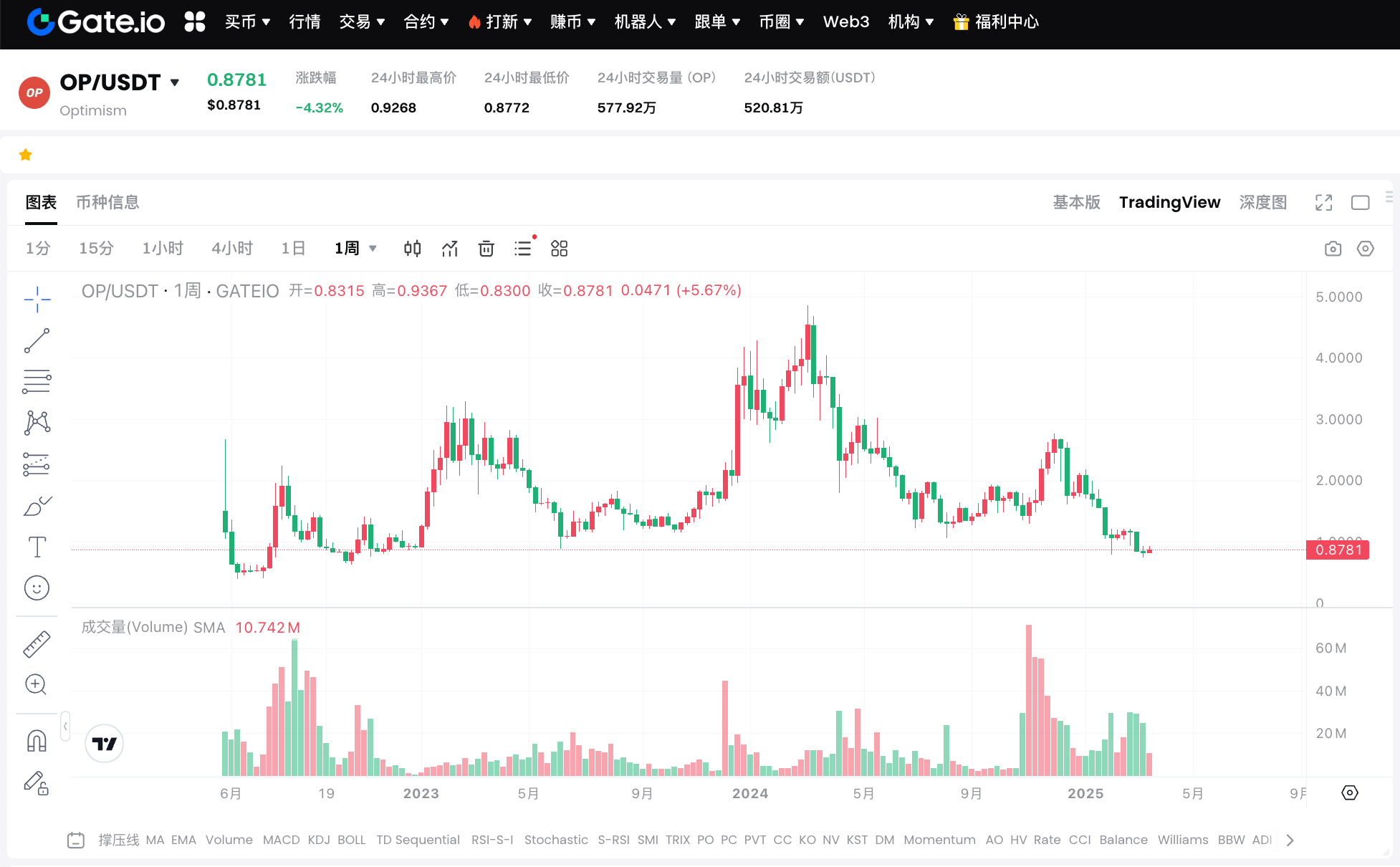
Origem: https://www.Gate.com/pt-PT/trade/OP_USDT
Starknet
Visão geral do Starknet
Starknet é uma solução de escalonamento de Camada 2 construída na Ethereum que utiliza a tecnologia ZK-Rollup (Zero-Knowledge Rollup) para lidar com as altas taxas e desafios de escalabilidade da Ethereum. Ao gerar provas STARK, Starknet oferece um ambiente de blockchain de alta capacidade, baixo custo e sem confiança, permitindo que os desenvolvedores criem aplicações descentralizadas complexas. Utilizando a linguagem de programação Cairo, Starknet realiza cálculos em lote off-chain e verifica-os on-chain usando provas de conhecimento zero, melhorando significativamente a eficiência e a segurança. As principais características incluem alta escalabilidade, capacidades computacionais robustas, disponibilidade de dados on-chain, forte segurança e suporte para desenvolvimento descentralizado a longo prazo.
Desenvolvimentos Recentes
Visão Estratégica
- Em 2025, Starknet tem como objetivo ser a primeira solução de Camada 2 a liquidar transações tanto em Bitcoin quanto em Ethereum, criando uma camada unificada para os dois maiores ecossistemas blockchain. Esta integração poderia desbloquear novas oportunidades DeFi e liquidez.

Fonte: https://x.com/Starknet
- Em 2025, o Starknet tem como objetivo ser a primeira solução de Camada 2 a liquidar transações tanto no Bitcoin como no Ethereum, criando uma camada unificada para os dois maiores ecossistemas de blockchain.
- Esta integração poderia desbloquear novas oportunidades DeFi e liquidez.
Atualizações Técnicas
- Versão de Lançamento v0.13.4
Em 27 de fevereiro de 2025 (lançamento da testnet) e de 17 a 24 de março (lançamento da mainnet), a Starknet implementou o Cairo-Native e a Compressão Stateful, reduzindo custos e melhorando a velocidade das transações.

Origem: https://x.com/Starknet
- Conectividade entre Cadeias
Em 12 de março de 2025, Xverse Swap permitiu trocas entre cadeias entre Bitcoin e Starknet, aumentando a interoperabilidade.
Em 14 de fevereiro de 2025, Starknet anunciou a adoção do protocolo IBC, conectando mais de 100 redes blockchain.
- Experiência do utilizador melhorada
Em 11 de fevereiro de 2025, a ponte StarkGate atualizou sua interface para facilitar as operações entre cadeias.
Em 31 de janeiro de 2025, as ferramentas desenvolvidas pela Endur e STRKfarm simplificaram o processo de transferência de ativos do Ethereum e de outras cadeias para a Starknet.
Progresso de Staking e Descentralização
- Mecanismo de Staking Atualizado
Em 21 de março de 2025, começou a votação para o STRK Staking v2, marcando uma nova fase para o staking na Starknet.
- Suporte expandido para carteiras
Entre 17 e 20 de fevereiro de 2025, os detentores de STRK ganharam a capacidade de apostar diretamente através da carteira Keplr e ganhar recompensas. Nansen também integrado funcionalidade de apostas com um sistema de pontos para mais incentivos.

Origem: https://x.com/Starknet
Incentivos e Financiamento do Ecossistema
- Iniciativas de Apoio Regional: Em 28 de fevereiro de 2025, a StarkWare lançou um fundo de start-up africano de $4 milhões para apoiar o desenvolvimento do ecossistema da Starknet na região.
IA e Automatização
- Plataforma de Implantação de Agente de IA: Em 19 de fevereiro de 2025, a Kasar Labs introduziu novas ferramentas que permitem aos utilizadores criar e implementar agentes de IA na Starknet, promovendo a colaboração e melhorando a automação dentro do ecossistema.
Ferramentas de Dados e Painel
- Painéis de Dados Personalizáveis: Em 22 de janeiro de 2025, a Starknet associou-se ao Token Terminal para permitir aos utilizadores construir painéis de dados personalizados para análise da Starknet.
Tendências de Preço STRK
Em 21 de março de 2025, STRK/USDT permanece em uma tendência fraca, com o preço em $0.1671 - uma fase de consolidação após uma queda prolongada. Apesar dos esforços da Starknet para impulsionar a inovação e otimizar o desempenho on-chain, o sentimento de mercado cauteloso e os fluxos de capital insuficientes limitaram a recuperação do preço.
Tecnicamente, o STRK tem suporte em $0.16. Se este nível falhar, o preço poderá testar a gama de $0.12. No entanto, se o suporte se mantiver e o volume de negociação aumentar, poderá ocorrer um ressalto de sobrevenda, com o primeiro alvo de resistência perto de $0.25. O volume de negociação atual permanece contido, indicando hesitação entre os participantes do mercado. A tendência futura dependerá das condições do mercado mais amplo e dos movimentos de preço do Bitcoin.

Origem: https://www.Gate.com/zh/trade/STRK_USDT
Era ZKsync
Visão geral da Era ZKsync
zkSync é uma solução de escalonamento da Camada 2 baseada em Ethereum que utiliza a tecnologia ZK-Rollup (Zero-Knowledge Rollup) para lidar com as altas taxas de gás e a lentidão das transações na Ethereum. Fornece um ambiente de blockchain rápido, seguro, de baixo custo e escalável para desenvolvedores e usuários, permitindo aplicações descentralizadas em grande escala. O zkSync utiliza provas de conhecimento zero e técnicas de prova recursiva para agrupar transações off-chain e submeter provas de validade on-chain, aumentando significativamente a eficiência. As principais características incluem taxas ultra baixas, confirmações rápidas, compatibilidade com Ethereum (suportando Solidity e Vyper), abstração de conta, suporte a contratos inteligentes e forte escalabilidade e descentralização.
Desenvolvimentos Recentes
Inovações Tecnológicas
- Compatibilidade com Bytecode da EVM: Simplifica o desenvolvimento ao suportar o bytecode da EVM e ferramentas avançadas para os desenvolvedores.
- Melhorias BoojumVM: Reforça a segurança e escalabilidade do zkSync utilizando a tecnologia BoojumVM.
- Desenvolvimento da Rede Elástica: Acelera o crescimento da rede elástica ao oferecer documentação e ferramentas para cadeias personalizadas e operações intercadeias sem costuras.
- Colaboração EigenLayer: Em 18 de março de 2025, a zkSync associou-se à EigenLayer para distribuir tarefas de prova ZK aos Serviços de Validação Ativa (AVS) da EigenLayer, melhorando a segurança da rede e a resistência à censura.
- Componente de Geração de Provas Fermah: Em 18 de março de 2025, a zkSync introduziu Fermah como um componente de geração de provas, melhorando a inovação em provas de conhecimento zero e aprimorando a escalabilidade.
Experiência do Utilizador e Desenvolvimento Web3
- Smart Login (SSO): Previsto para ser lançado em 2025, permitindo autenticação de identidade Web3 e recuperação social sem interrupções.
- Objetivos de Experiência semelhante ao Web2: Pretende proporcionar uma experiência de utilizador ao nível do Web2 com um desempenho de 10.000 TPS e custos de transação de $0.0001, mantendo ao mesmo tempo a ordenação descentralizada.
Parcerias de Ecossistema
- Colaboração de Gráficos: Em 18 de março de 2025, a zkSync associou-se ao Graph para apoiar subgráficos da Era zkSync, fornecendo indexação de dados de blockchain descentralizada para o crescimento de DApps.
- Programa Piloto Gitcoin: Em 6 de março de 2025, o Gitcoin lançou um programa piloto de seis meses financiado pela Fundação zkSync, oferecendo 5 milhões de tokens ZK como recompensa para os contribuidores do ecossistema.
- Colaboração da Lens Chain: Em 13 de fevereiro de 2025, a Lens Chain integrou-se com o zkSync, usando a Ponte Compartilhada do zkSync para pagamentos de gás SocialFi.
Colaborações Financeiras
- Parceria UBS: Em 31 de janeiro de 2025, o maior banco da Suíça, UBS, utilizou o zkSync para investimentos em ouro baseados em blockchain, oferecendo maior privacidade e conveniência.
Segurança e Privacidade
- Atualizações TEE: Em 14 de janeiro de 2025, o zkSync atualizou seu Ambiente de Execução Confiável (TEE), combinando TEE com provas de conhecimento zero para aumentar a segurança e a confiança.
- Em 6 de janeiro de 2025, foi lançada a zkSync Ignite Season 1, planeando alocar 300 milhões de tokens ZK ao longo de nove meses para tornar a zkSync Era um hub de liquidez para redes resilientes. No entanto, devido às más condições de mercado, a zkSync cancelou o seu programa de recompensa de liquidez 'Ignite' a 14 de março.

Origem: https://x.com/zksync
Tendências de Preço ZK
Em 21 de março de 2025, ZK/USDT está sendo negociado a $0.07159, mantendo uma tendência recente de baixa em meio a um sentimento de mercado cauteloso. Após cair de suas altas, o preço se consolida em níveis mais baixos, com suporte de curto prazo em torno de $0.065. Se esse suporte for quebrado, o preço poderá cair para $0.050.
O volume de negociação tem diminuído recentemente, refletindo uma fraca participação no mercado. No entanto, se ocorrer um aumento no volume, o preço poderá recuperar para a faixa de $0.10. Os investidores devem monitorizar de perto o sentimento do mercado geral e os desenvolvimentos no setor Camada 2. Por agora, é recomendável adotar uma abordagem de esperar para ver até que sinais de tendência mais claros surjam.

Fonte:https://www.Gate.com/zh/trade/ZK_USDT
Linea
O que é Linea?
Linea é uma solução de escalonamento da Camada 2 compatível com o Ethereum, projetada para resolver a congestão de rede e as altas taxas, reduzindo os custos de transação e aumentando a velocidade. Utilizando a tecnologia Optimistic Rollup, ela agrega dados de transação e os envia para o Ethereum mainnet, aliviando as cargas computacionais on-chain. Linea emprega um modelo de disponibilidade de dados chamado "AnyTrust" para melhorar tanto a segurança quanto a escalabilidade, mantendo total compatibilidade com o ecossistema Ethereum. Suas principais características incluem baixas taxas de transação, suporte a contratos inteligentes, compatibilidade com ferramentas Ethereum existentes e forte apoio à descentralização e transparência. Linea tem como objetivo criar um ambiente mais eficiente para aplicações descentralizadas.
O Futuro da Descentralização da Linea

Origem: https://x.com/LineaBuild
Recentes Desenvolvimentos na Linea
Avanços Tecnológicos
- Lançamento do Token $LINEA: A Associação Linea planeia lançar o token $LINEA no 1.º trimestre de 2025 para permitir a governação da comunidade, permitindo aos detentores participar na tomada de decisões. No entanto, até 26 de Março, não foram anunciadas atualizações sobre o lançamento do token devido ao fraco sentimento de mercado e desafios de liquidez. Fique atento aos canais oficiais da Linea para atualizações.
- Pontes USDC sem costura: Em 26 de março de 2025, Linea tornou-se a primeira blockchain a permitir a conversão sem costura entre USDC e USDC nativo, melhorando a interoperabilidade entre cadeias.
- Desempenho Criptográfico Melhorado: Em 5 de fevereiro de 2025, a Linea otimizou seu esquema de compromisso polinomial Vortex usando as funções de hash SWIFFT e Ring-SIS. Ao alavancar a otimização AVX512, alcançou uma taxa de transferência ao nível de Blake (1.750Mb/s), impulsionando significativamente o desempenho criptográfico.
Experiência do Utilizador e Crescimento da Web3
- Programa de Recompensas Descentralizado: Em 27 de fevereiro de 2025, a Linea lançou o primeiro programa de recompensas ao consumidor descentralizado e impulsionado pela comunidade do mundo. Os utilizadores podem ganhar 9% de cashback através de compras com o Cartão MetaMask, com recompensas disponíveis em tokens DeFi, stablecoins, memecoins e NFTs.
Colaborações no ecossistema
- agregador DEX OG polegadas: Em 13 de março de 2025, o agregador DEX OG polegadas foi lançado na Linea, melhorando as capacidades de negociação descentralizada.
- Token Cultural Foxy: Em 24 de fevereiro de 2025, a Linea introduziu o seu primeiro token cultural, Foxy, que se tornou uma das comunidades mais populares do ecossistema.
- Revisão do Ataque de Sybil: Em 17 de fevereiro de 2025, a Linea completou uma revisão dos apelos do ataque de Sybil, atualizando os dados de falsos positivos e corrigindo 3,5 mil casos de relatórios incorretos.
Conclusão
A primeira metade de 2025 destacou a vitalidade das soluções de Camada 2, impulsionadas pela inovação tecnológica e expansão do ecossistema. Desde o protocolo BoLD da Arbitrum avançando na validação descentralizada até a ambição da Starknet de ligar o Bitcoin e o Ethereum; desde o foco da Base na privacidade e velocidade até os incentivos comunitários impulsionados pela governança da Optimism; desde a colaboração do zkSync com a EigenLayer para melhorar a resistência à censura até a ponte USDC sem problemas da Linea—esses projetos estão moldando coletivamente o futuro da Camada 2 com abordagens únicas.
Enquanto o mercado enfrenta pressões de curto prazo de desbloqueios de tokens e desafios de liquidez, os projetos estão construindo valor de longo prazo por meio de atualizações tecnológicas, incentivos de ecossistema e parcerias estratégicas. Inovações em agentes de IA, privacidade on-chain e consenso de alto desempenho abordam o "trilema impossível" do blockchain e sinalizam a transformação da Camada 2 de uma ferramenta de escala para infraestrutura Web3 fundamental. À medida que a interoperabilidade entre cadeias melhora e a governança descentralizada amadurece, a Camada 2 pode se tornar o principal hub conectando ecossistemas de várias cadeias e apoiando bilhões de usuários, abrindo caminho para um crescimento explosivo em DeFi, SocialFi, GameFi e além. A segunda metade desta evolução pode testemunhar o salto histórico da Camada 2 de um "patch de desempenho" para um "motor de valor".
Artigos relacionados
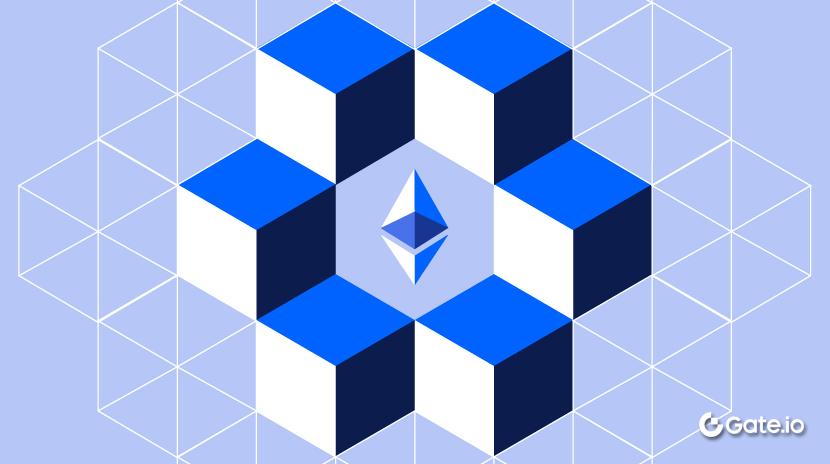
Como Aposta ETH
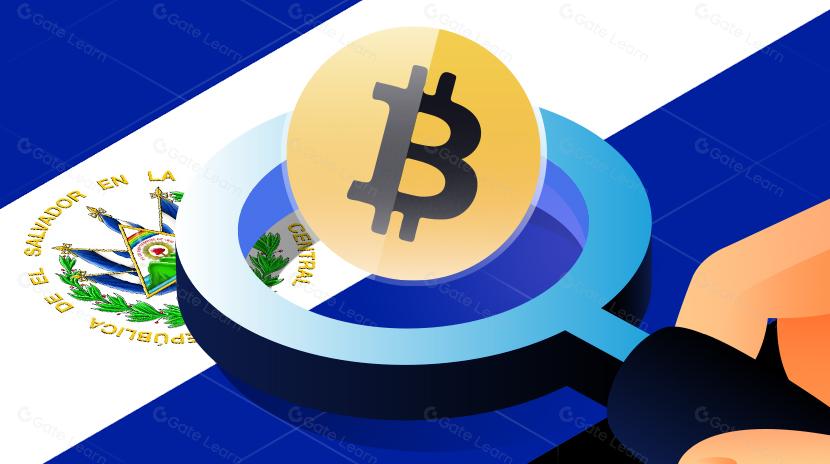
Utilização de Bitcoin (BTC) em El Salvador - Análise do Estado Atual

O que é o Gate Pay?
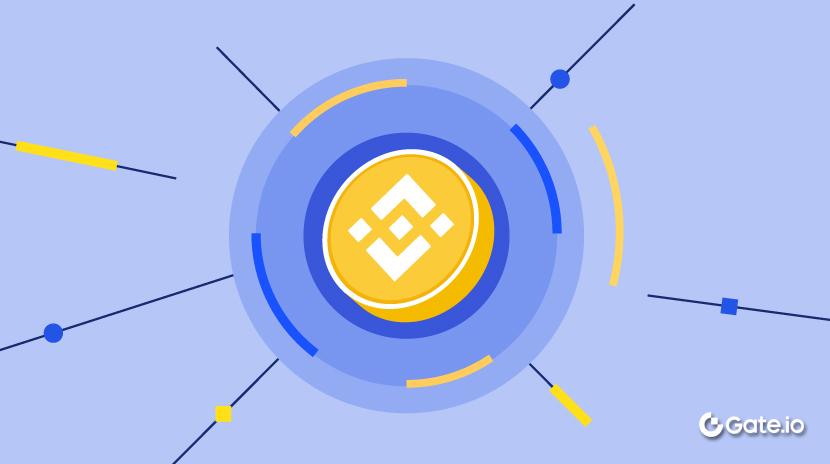
O que é o BNB?
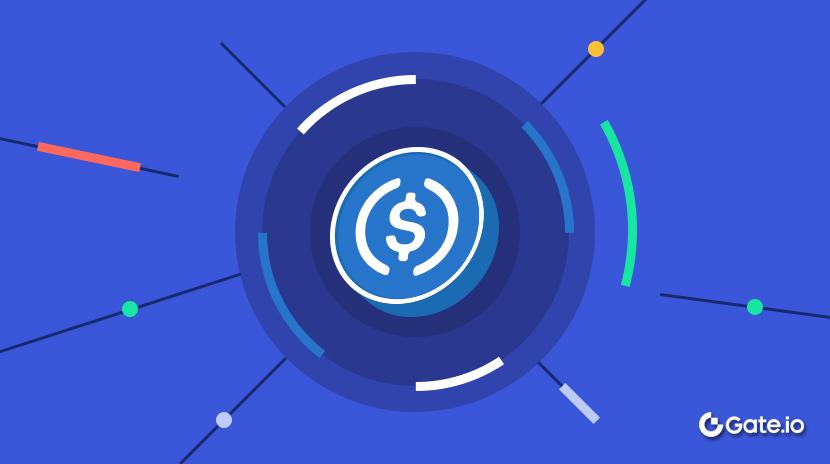
O que é o USDC?


